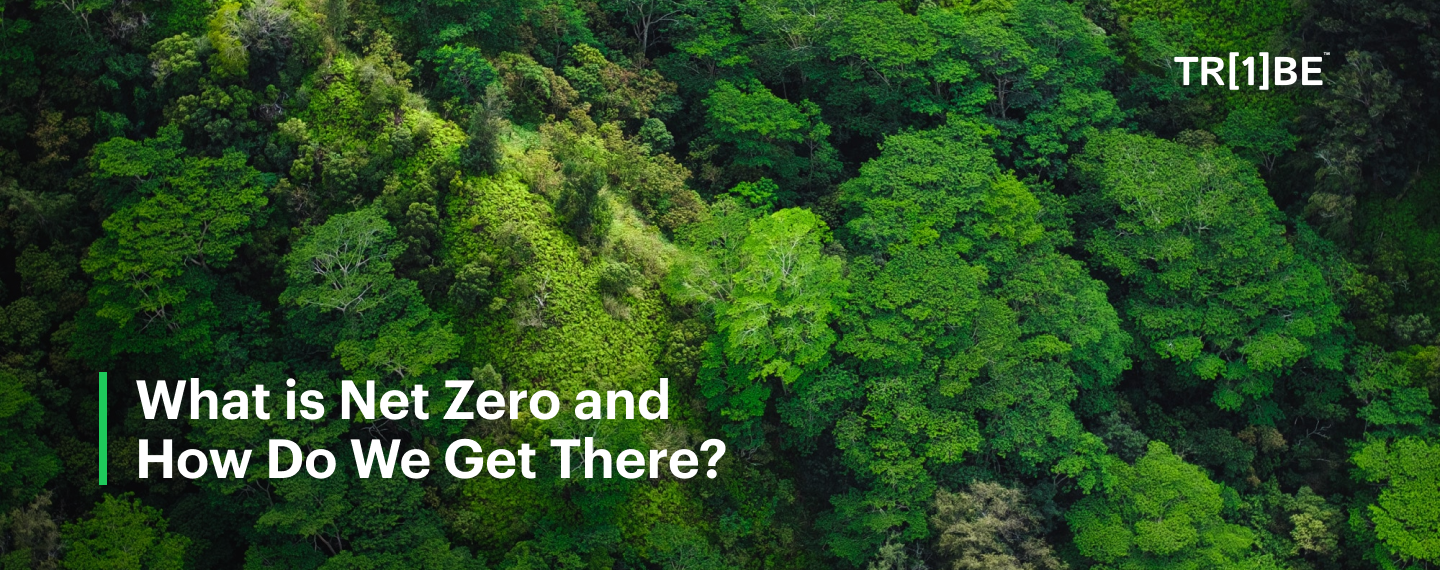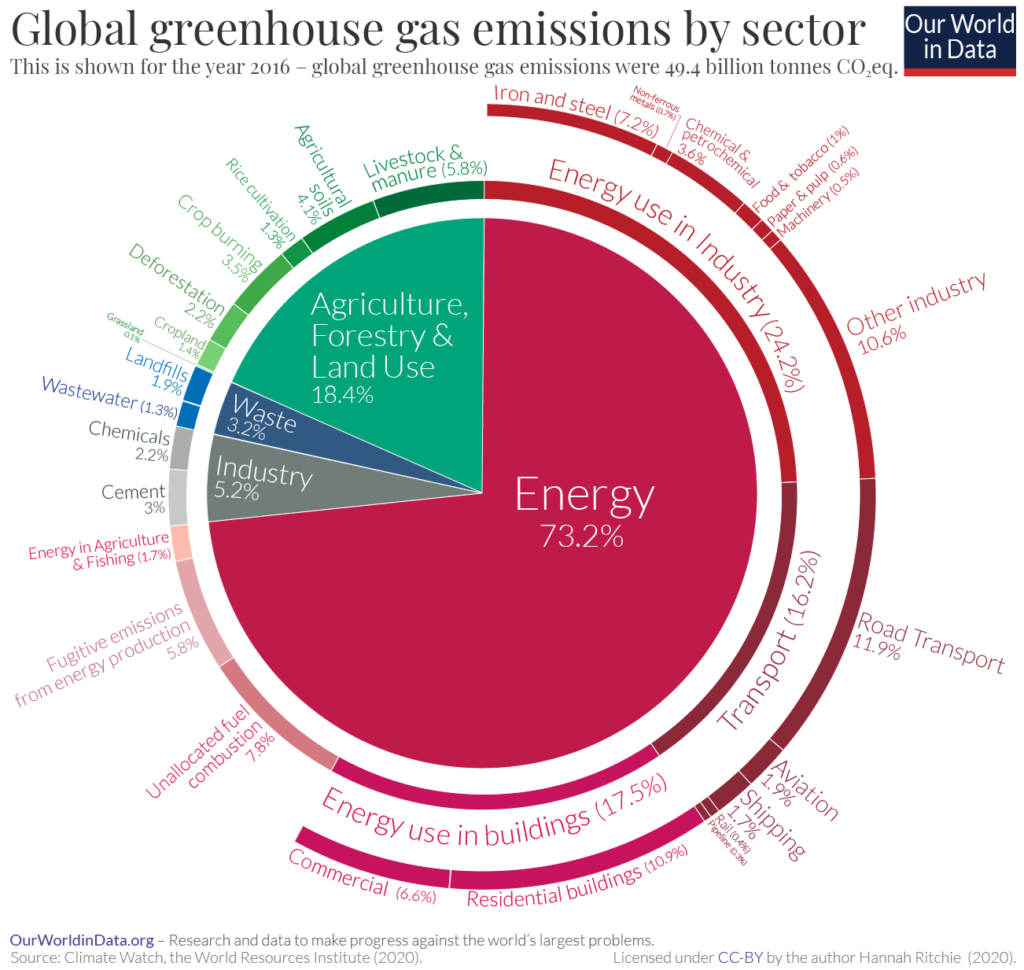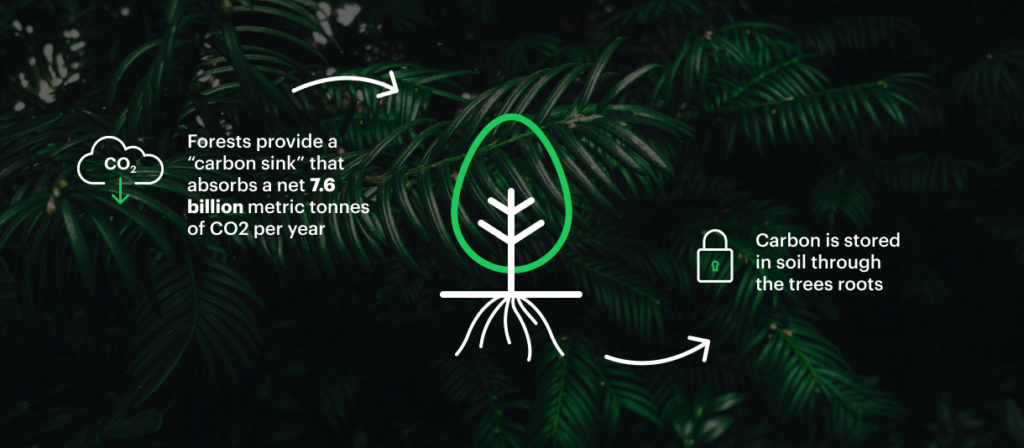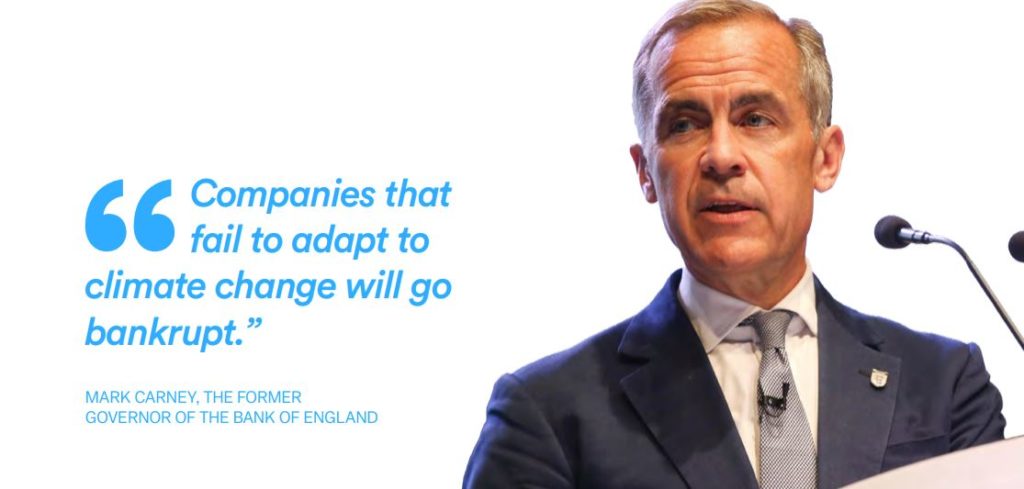
Fast fashion is now responsible for more pollution than all international flights and maritime shipping combined. Now, slow fashion businesses are on the rise to help tackle the problem.
It is now a fact that the world must reduce its emissions. In order to prevent the consequences of climate change, a Net Zero emissions structure has to become the centrefold of business operations. Many companies are now incorporating Net Zero goals into their mission statements. But what is Net Zero, and how do we get there?

Net Zero is a term both wide and specific, but ultimately it refers to a person, organisation or society reaching a state at which they’re putting in as much carbon as they’re taking out of the atmosphere.
Carbon, in the form of carbon dioxide, is the primary greenhouse gas fuelling planetary heating and climate change. Therefore, by figuring out how to take out as much as we put in, our society can help to reduce the rate and impact of climate change on our world.

By now we have acknowledged that our society cannot function on zero emissions alone without severely hampering our safety, comfort and advancement. However, by finding or formulating a valid carbon scheme, companies can achieve Net Zero through the purchase of carbon credits in combination with the reduction of emissions.
In this article, we’ll explore how companies can achieve Net Zero, how to securely purchase carbon credits and the other important ways in which companies reduce carbon emissions on the road to carbon neutrality.
Carbon offsetting is the process of reducing your company’s total emissions by contributing financially — or directly engaging in — efforts to remove carbon from the atmosphere and/or preventing it from getting there in the first place. For example, companies who partner with One Tribe can donate a small portion of each transaction to projects that protect and restore the world’s rainforests. Rainforests are some of the largest carbon capture mechanisms in the world thanks to their ability to store and process carbon.

Another example of how carbon offsetting might work is by providing communities engaging in high-carbon release activities with the technology to reduce those emissions. For example, by providing more energy efficient technology or building materials.
What’s equally important to the financial or direct contribution to carbon reduction or capture efforts is finding a reliable partner or methodology. For most businesses, the most cost-effective and useful way is using a partner organisation. Finding a trustworthy organisation will take some research, but a solid method is using trustworthy organisations like Charity Watch (if they’re a charitable organisation) or Investopedia’s guide to carbon offsetters.

Whether done internally or through a partner organisation like Normative, calculating your carbon emissions effectively is the only way to ensure that your carbon offsetting and reduction efforts are sufficient to achieve Net Zero. Your first step for calculating your scope one (directly generated) and scope two (indirectly generated via power production) carbon emissions is to gather your energy consumption records via your company’s utility bills. Then you’ll need to convert your consumption into a useful measurement — the United Kingdom’s DEFRA has assembled a guide for conversion. Once you have that measurement, you can begin planning your path to Net Zero.
The truth is that there is no more effective method of decarbonizing the atmosphere than preventing it from occurring in the first place. So, consider these methods for reducing your carbon footprint, like investing in more energy efficient vehicles and automating technology. Once you’ve determined which emissions are strictly necessary for your success, you can find a suitable partner to purchase carbon credits from, or engage directly in carbon offsetting practices to account for the remainder.
One Tribe can, of course, support businesses on their journey to Net Zero by decarbonising products and logistics through contributions to tree protection and conservation projects worldwide.
Being an eco-functional business means constantly reassessing with both your bottom line and your carbon impact in mind. Is one method of carbon reduction too expensive for your business? Find another one or look for other areas to reduce emissions. This will be a part of your quarterly, yearly and long-term business planning efforts. Just like your products, services and operations, pivoting is part of being a healthy business.
The UK government has set a goal of reaching Net Zero by 2050. It recognises the role SME’s have in contributing to emission reductions and businesses are encouraged to review their carbon expenditure and reduction efforts. Starting your Net Zero journey now will not only meet future government regulation but will have a measurable contribution to achieving these Net Zero goals.
In 2021, GOV UK released their Net Zero Strategy: Build Back Greener strategy. The supporting document sets out policies and proposals for decarbonising all sectors of the UK economy to meet net zero target by 2050. These assessments use different assumptions regarding the extent to which countries will meet their NDCs and the actions that will be taken by countries to reduce their emissions after 2030.

It’s clear that it’s in your business’s best interest to begin these efforts immediately, not only to limit the environmental impact but it makes sense from a commercial perspective as well. According to Deloitte, UK consumers prefer climate-friendly companies, so swift action will also help establish a positive reputation for your brand.
To minimise the effects of climate change, businesses need to significantly reduce their reliance on fossil fuels and their total greenhouse gas emissions. Certification guarantees that businesses can reliably advocate the positive impact they are having on the planet.
PAS 2060 is the only recognised international standard for carbon neutrality. It is a specification detailing how to demonstrate carbon neutrality produced and published by the British Standards Institution. Regardless of the industry, companies can use the PAS 2060 standard to strengthen customer relationships and to accurately promote sustainability. It is the only current certification that can specifically support Net Zero businesses. Therefore it is an important certification for businesses to look into when starting their Net Zero journey.
For more on how to build carbon offsetting into your business model, check out how we work.
how to start carbon offsetting, what are carbon offsets, how do businesses offset their carbon emissions, is it possible to reach net zero, how does business achieve net zero, net zero sustainability consultant, net zero provider, getting started with your net zero journey, scope 1 2 and 3 emissions, how do i evaluate my scope 1 2 and 3 emissions, what is net zero and is it possible
One Tribe is a Climate Action Platform enabling businesses and their customers to make a positive environmental impact.
Eric currently works as an independent consultant at the intersection of nature and climate, focused on catalysing market and non-market solutions to drive the just transition.
He previously was Head of Product at Earthshot Labs, supporting nature conservation and restoration projects across the global south secure project finance. Prior to Earthshot Labs, Eric led nature-based carbon project development for Gorongosa National Park in Mozambique and founded the Carbon Cooperative, a global alliance of leading nature conservation and restoration practitioners exploring carbon finance. After serving in the Peace Corps in Mozambique out of university, he spent much of his 20s working in community-based conservation and ecosystem restoration efforts in Sub-Saharan Africa interspersed with two startup ventures as co-founder and CEO of a mental health tech startup and COO of a sustainable coffee company. Eric has a dual Masters in Environmental Engineering and Environmental Policy from Stanford University where he was a NSF Graduate Research Fellow and a BS in Environmental Engineering from Tufts University.
Alan is a risk management thought-leader, superconnector, and FinTech pioneer. His mission is to enable an Earth Positive economy which includes nature in global accounting systems.
Alan is Founder of Generation Blue, a venture studio dedicated to planetary game changers powered by exponential technologies. Previously, Alan established Natural Capital Markets at Lykke AG, pioneering blockchain based forestry and carbon backed tokens. Alan has over two decades of risk management experience advising global financial institutions, and was a founding member of the RiskMetrics Group, a JPMorgan spin-off. Alan is an investor and advisor to regenerative impact ventures, including TreeBuddy.Earth, Regenativ, and Vlinder Climate.
Lori Whitecalf made history when she became the first woman to be elected Chief of Sweetgrass First Nation in 2011. She served three terms of office from 2011-2017.
Lori took a two-year hiatus from leadership to expand the family ranch and serve as the FSIN Senior Industry Liaison. She was re-elected on November 29. 2019 and again on November 30, 2021, as Chief of Sweetgrass. Chief Whitecalf practises a traditional lifestyle of hunting, fishing and gathering. She currently sits on the following boards: Saskatchewan Indian Institute of Technology, FSIN Lands and Resource Commission, Battle River Treaty 6 Health Centre and Battleford Agency Tribal Chiefs Executive Council, FSIN Women’s Commission.
Tina is the Chief Business Officer for MLTC Industrial Investments, the Economic Development arm of the Meadow Lake Tribal Council. She has a diverse background of experience. Having spent 15 years as a municipal Chief Operating Officer, 20 years involved in Saskatchewan’s Health Authority Board Keewatin Yatthe and 9 years with Northern Lights Board of Education.
She continues as a Board Member with Beaver River Community Futures supporting small business development in her home region. Tina brings a wealth of experience in a variety of fields and many connections to the Indigenous communities of Northern Saskatchewan. In addition Tina holds a BA Advanced from the U of S, a Certificate in Local Government Authority from the U of R and is certified as a Professional Economic Developer for Saskatchewan and a certified Technician Aboriginal Economic Developer (TAED).
Tootoosis’ career spans 40+ years in HRM, political leadership, and Indigenous economic development, as a dedicated bridge builder and advocate for Indigenous causes.
As a key member of the Saskatoon Regional Economic Development Authority (SREDA) team since 2021, he develops strategies for the Truth and Reconciliation Commission final report and Call to Action #92.
He is a graduate of the First Nations University of Canada and a certified Professional Aboriginal Economic Developer. Spearheading various community initiatives while serving as a Chair of the SIEDN while directing ILDII and WIBF. Founder of MGT Consulting Tootoosis is based in Saskatoon, Treaty Six Territory.
Cy Standing (Wakanya Najin in Dakota) has a long and distinguished career including serving overseas as an Electronics Technician in the Royal Canadian Air Force, former Chief of Wahpeton Dakota Nation, former Vice Chief of the Federation of Saskatchewan Indigenous Nations (FSIN), past Executive Director of Community Development Branch of the Department of Northern Saskatchewan as well as an Order in Council appointment to the Federal Parole Board.
Mr. Standing has served as a Director on many Profit and Non-Profit Corporate Boards, including serving as a Director for Affinity Credit Union with assets of over six billion dollars as well as IMI Brokerage and Wanuskewin and is currently a member of the One Tribe Indigenous Carbon Board.